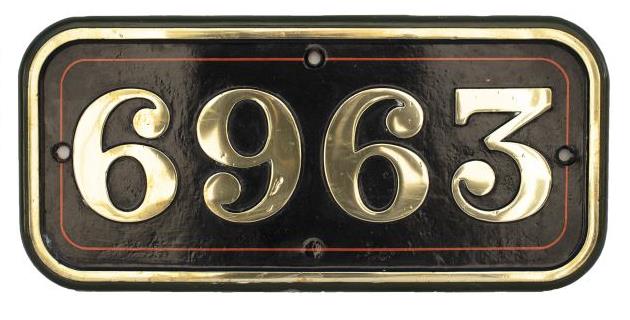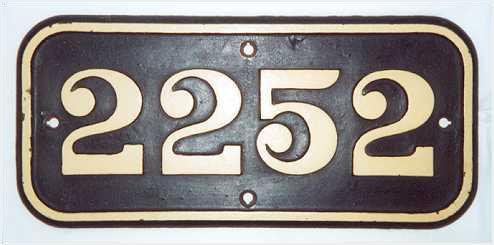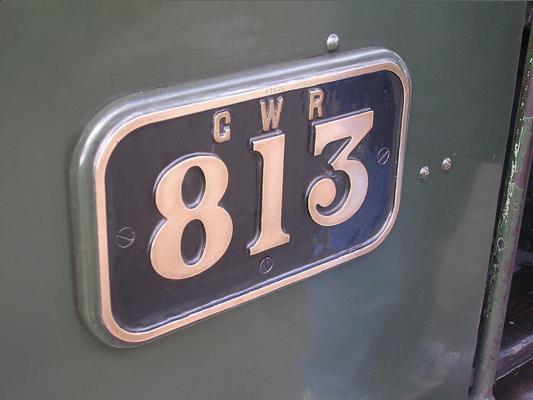| Section Page | Previous Page | Next Page |
GWR loco numberplates
Tender engines carried the numberplates on the cab side. Tank engines at first had the numberplate on the centre of the tank sides, but from around 1907, these were moved backwards to the rear of the side tanks (on small engines) or the bunker sides (on larger engines). More detail on this placement can be found on the relevant livery page. For lined locos, plates were also lined, the lining being ⅛" orange chrome. Unlined locos had unlined plates. The plates on some blue Kings had white lining. Plates that were red background (in BR days) were unlined. Cast plates were ¾" thick. The numerals on number plates were 5¾" high. Jim Champ has a drawing of the 4-digit plate. The 3-digit plates were shorter. The majority of the cast numberplates were brass. Many however were cast in iron. The perimeter and numerals on the cast iron plates were often picked out in cream paint. Here is a useful listing showing which types were fitted.
|
| Section Page | Previous Page | Next Page |


